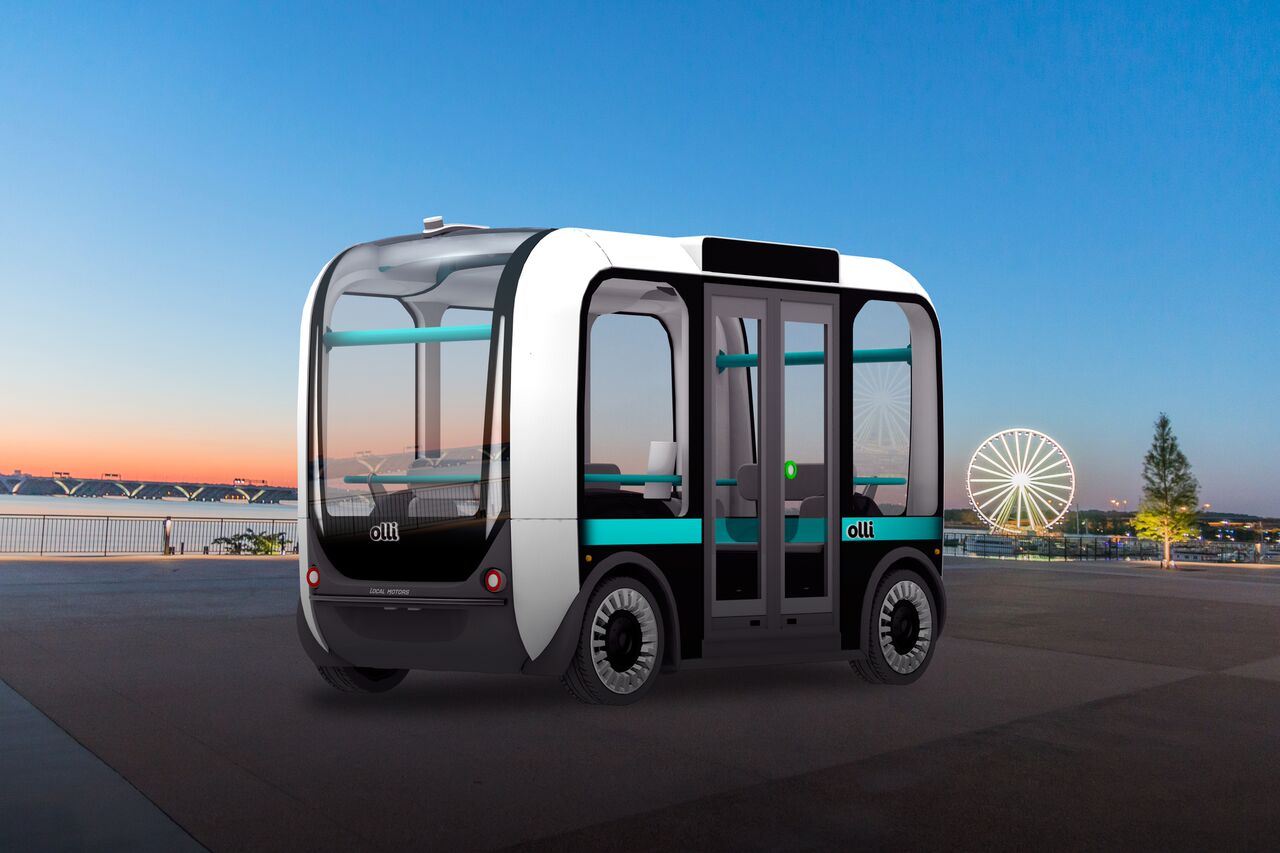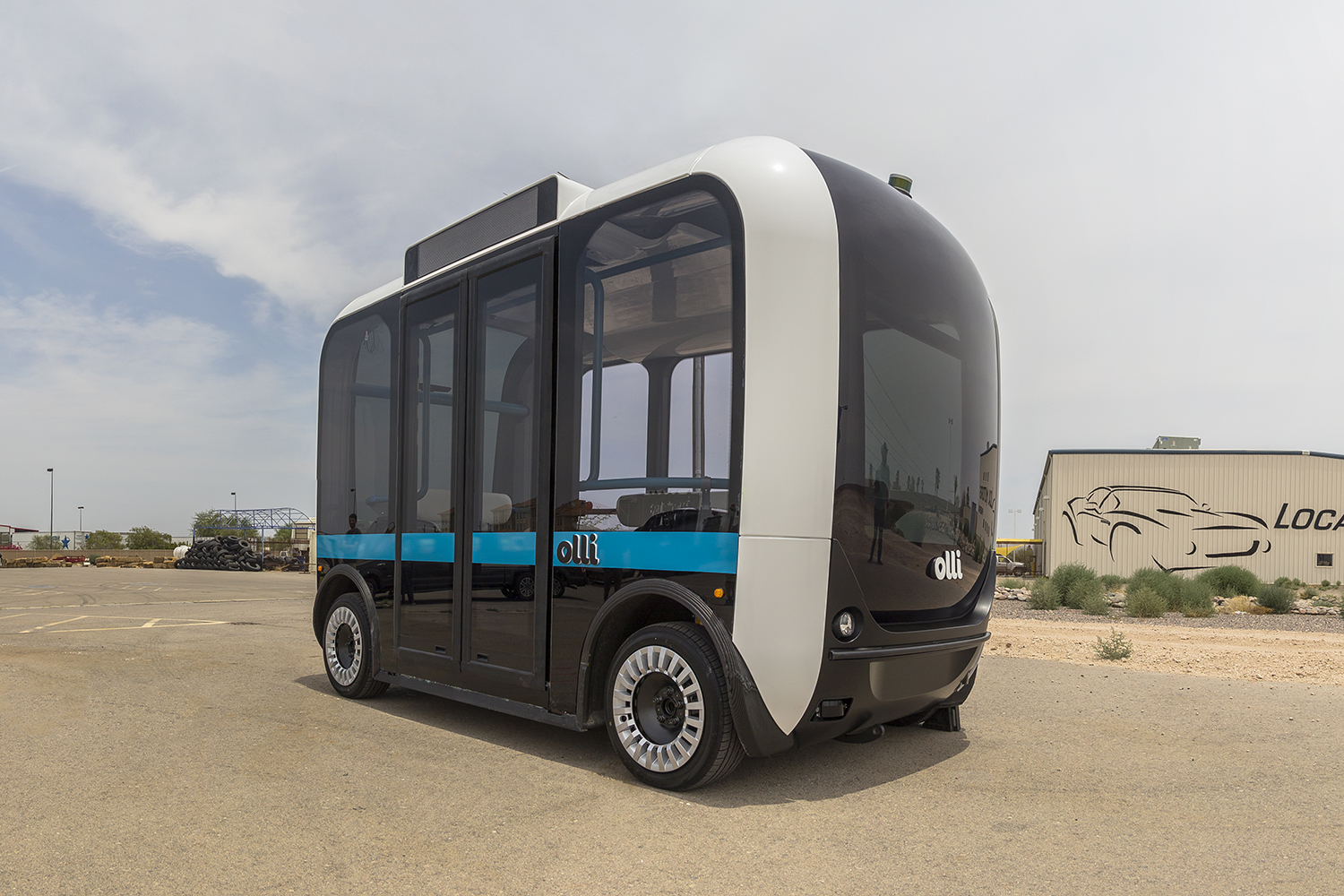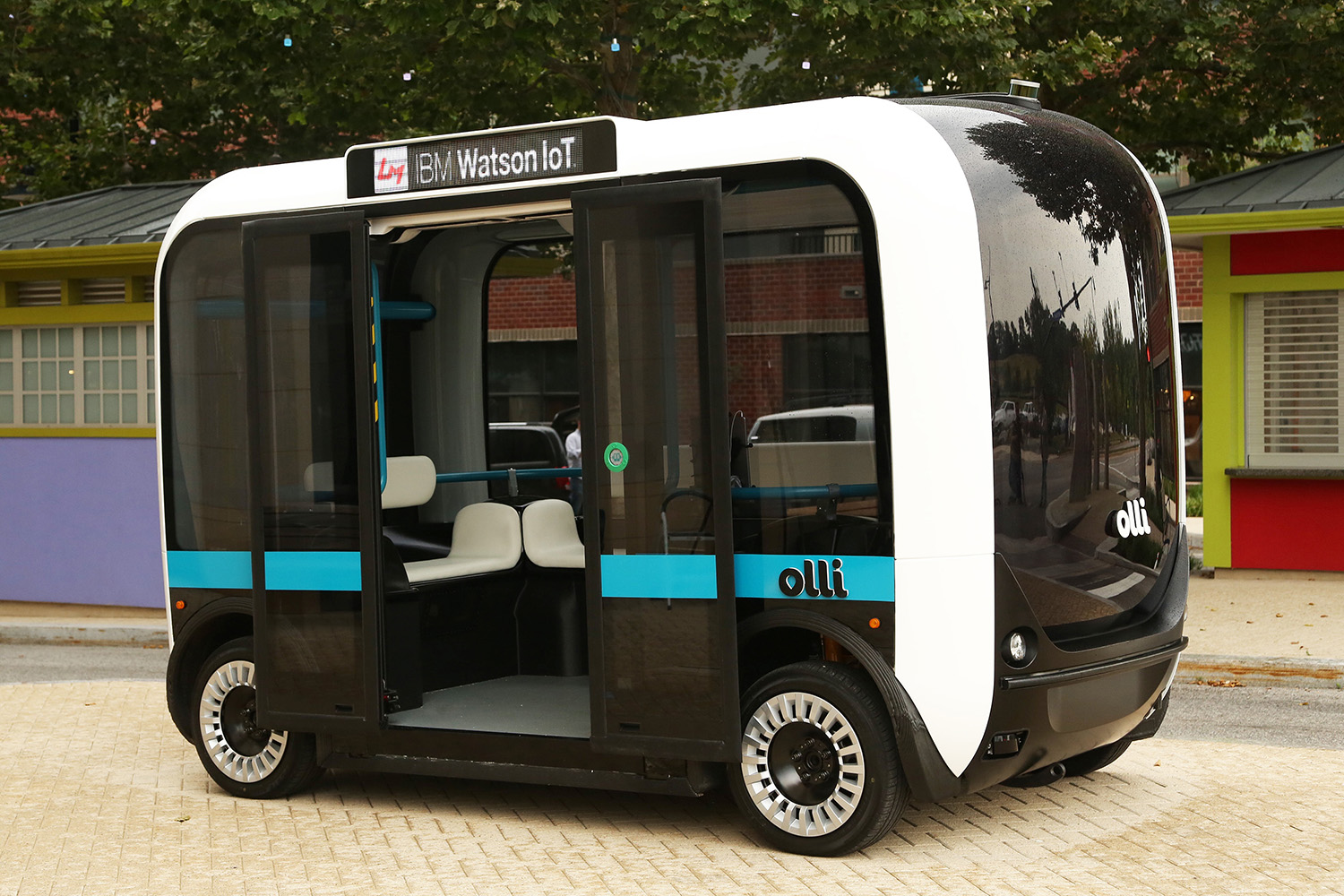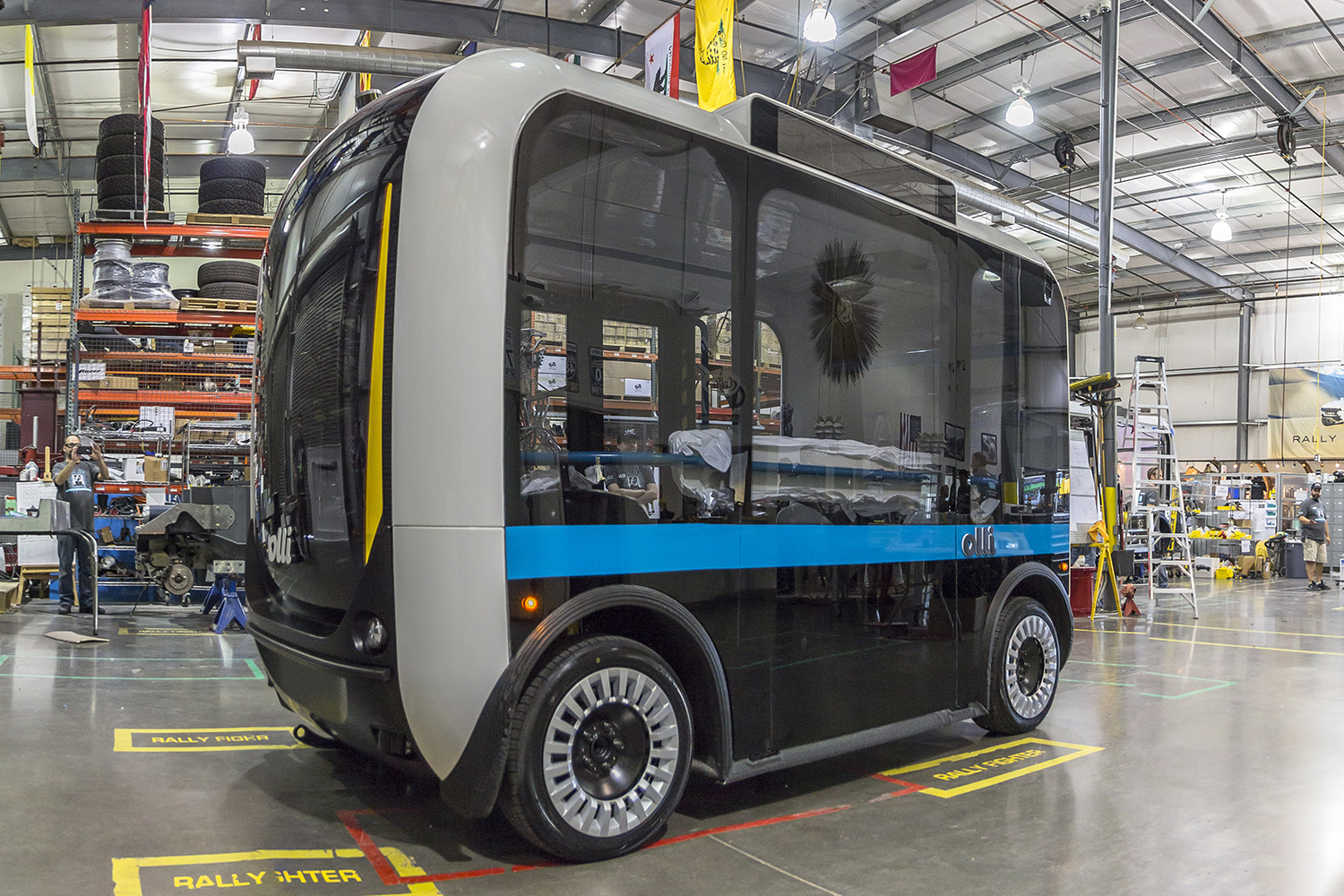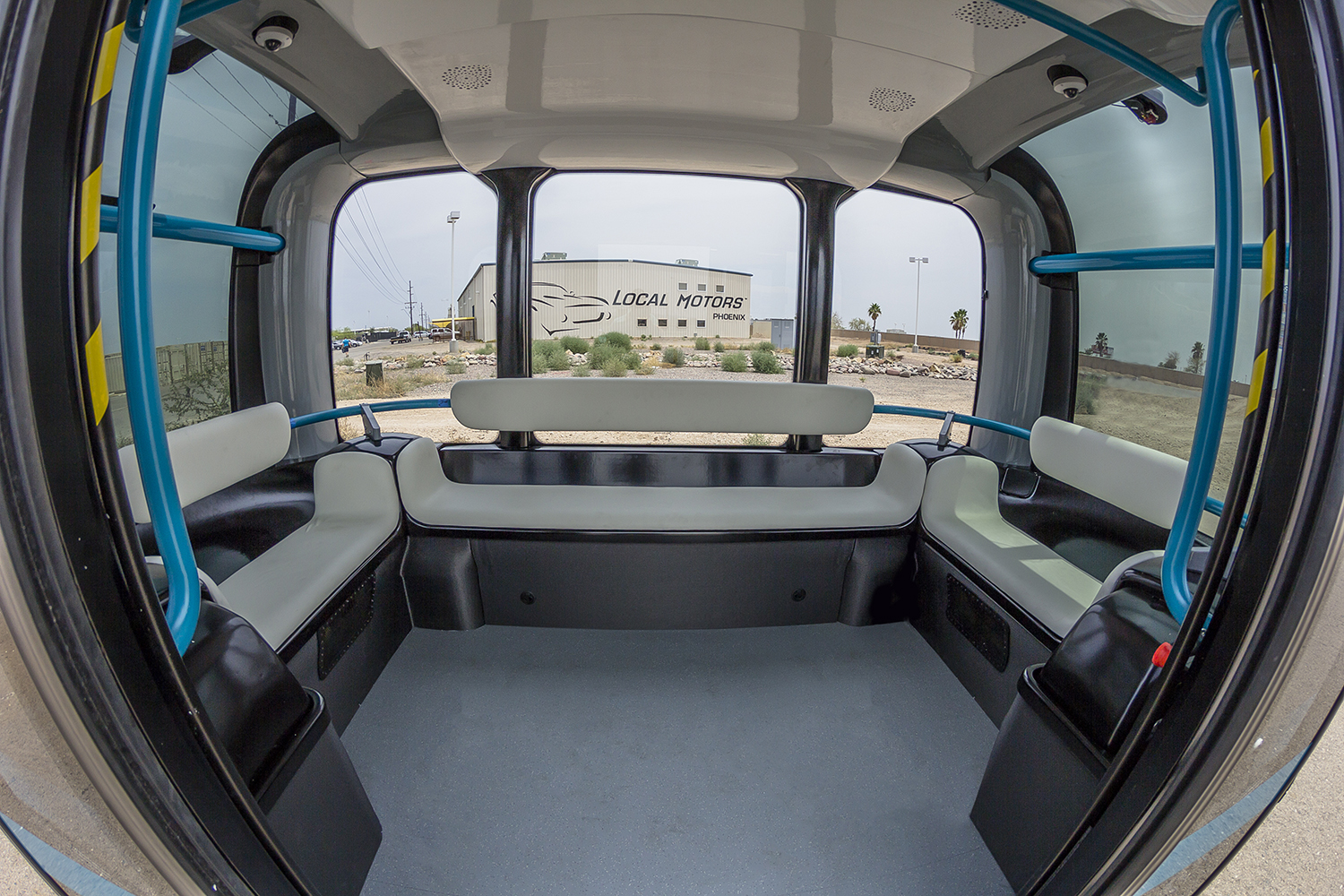In fact, it’s a genuine product — dubbed “Olli” — created by Arizona-based automaker Local Motors and powered by IBM Watson’s cognitive learning car technology, IBM Watson Internet of Things (IoT) for Automotive. Packed with more than 30 sensors and capable of carrying up to 12 people, Olli is currently running on local public roads in Washington DC, and will expand to Miami-Dade County and Las Vegas later this year.
“Olli offers a smart, safe and sustainable transportation solution that is long overdue,” says Local Motors CEO and co-founder John B. Rogers. “Olli with Watson acts as our entry into the world of self-driving vehicles, something we’ve been quietly working on with our co-creative community for the past year. We are now ready to accelerate the adoption of this technology and apply it to nearly every vehicle in our current portfolio and those in the very near future.”
As exciting as the present is for Olli, it’s the future that holds the most promise for Local Motors. “We sincerely believe that Local Motors needs to be on the cutting-edge of any and every vehicle technology that’s out there,” Jacqueline Keidel, a spokeswoman for Local Motors tells Digital Trends. “By making vehicles in small batches and having micro factories around the world, we’re not only able to be an agile company that can introduce the latest technologies available, but also cater [our technologies] to specific regions and what those regions need.”
Because of Olli’s micro factories, Jacqueline says, the vehicles Local Motors produces can literally be tweaked and improved every time a new unit is put together. Even more impressively, it means that an Olli created for a sunny part of the U.S. could be made to rely on solar power, while an Olli built for a less sunny area could be powered by other electric vehicle technologies.
Suddenly public transport commutes to work just got a whole lot more exciting!
